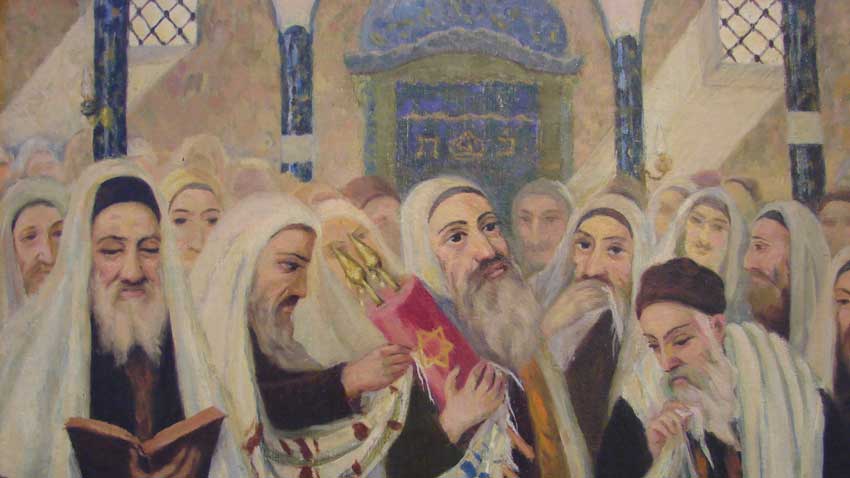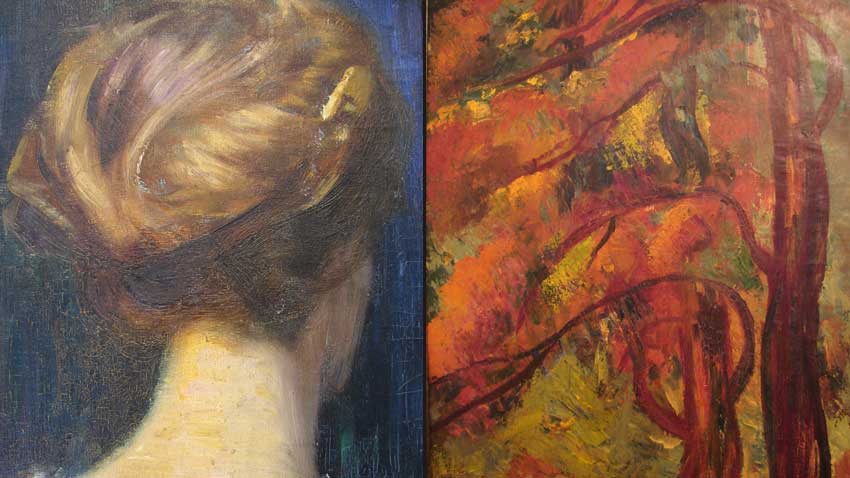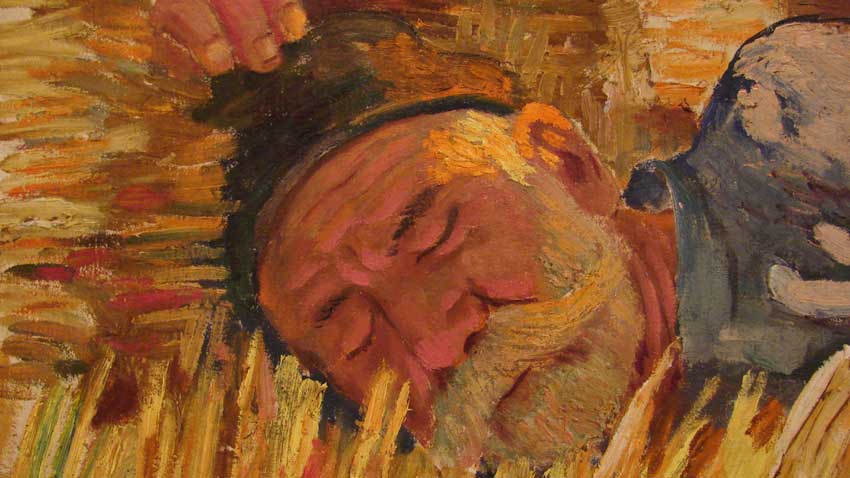A painting by Bulgarian artist and art critic Assen Vassiliev is telling its story dozens of years after it was painted. Discussing a painting which has been part of many exhibitions, takes us back to the first years of the Cold War and the ideological restrictions of the period.
Two years ago art critic Plamen Petrov stood face to face with Prof. Vasiliev’s work for the first time. And in it, he recognized faces, emblematic to Bulgarian art like Vladimir Dimitrov-the Master, Ivan Nenov, Kiril Tsonev… But who are the other figures painted on the canvas? What stories can it relate? A group of experts was set up to look for the answers to these questions - Plamen Petrov, art restorer Ilinka Chergarova and art critic Ramona Dimova. Prof. Evgenya Kalinova from the History Department at the St. Kilment Ohridski University, Sofia made an in-depth analysis of the dramatic changes fine art in Bulgaria underwent in the first years of the Cold War. Her study is featured in the catalogue of the exhibition on display at Vaska Emanouilova gallery in Sofia.

“We have identified all people in the painting, 20 artists in all, among them one lady – Rayna Evtimova,” says for Radio Bulgaria Plamen Petrov. “At the centre of the painting there is a painting, i.e. a picture within a picture. And we have discovered who the person depicted in it is – Mordohay Benzion, a painter with a prominent role in Bulgarian fine arts, who unfortunately died at the age of 42, though his legacy is fascinating. It turns out that the artists brought together in this group portrait, painted somewhere between 1950 and 1952, started out from the town of Kyustendil. Almost all of them were born either in this town or in the villages nearby, with the exception of Ivan Nenov, but he went to primary school in Kyustendil. And they all have some connection with Vladimir Dimitrov-the Master. He is one of their first mentors, a patron of their art who invested money in their work.”
In Discussing a Painting all artists are depicted with one of their works. For example, the work by Vladimir Dimitrov-the Master shown has never been displayed at an exhibition. Kiril Tsonev’s painting Autumn Foresthas not been on display for more than 50 years and is only now being shown after some serious restoration work. And one more intriguing fact: the experts who examined Assen Vassiliev’s picture discovered there was another painting “encoded” in it – Raphael’s fresco School of Athens where the central figures are Plato and Aristotle. In the Bulgarian painting, the central figures are Vladimir Dimitrov-the Master and writer and painter Kroum Kyulyavkov, engaged in a discussion of sorts.

“Just as Plato is Aristotle’s mentor, so is the Master mentor to Kyulyavkov,” Plamen Petrov says. “The figure of the “student” is, however, highly controversial, as Kyulyavkov was part of the communist system after 1944 and its staunch advocate – that was the time when Bulgaria fell into the Soviet orbit. In 1950 he was appointed rector of the National Art Academy – a purge ensued to meet the party dogma and the new cultural policy.”
Assen Vassiliev’s canvas was painted in the period when Ivan Nenov and Kiril Tsonev were fired from the academy, not without the knowledge and assistance of Kroum Kyulyavkov himself, i.e. they were in fact fired by a friend, with whom they had played in the streets of Kyustendil as children and gone to drawing classes together.

“But in his painting Assen Vassiliev shows them as friends. It seems to me it would not be an overstatement to say that this painting is a tribute to the Kyustendil group of artists but also an attempt to reconcile the people who, at the beginning of the 1950 had turned against one another,” Plamen Petrov says further.
The exposition also displays works owned by the Sofia city Art Gallery and the Vladimir Dimitrov-the Master gallery in Kyustendil, as well as of the organization of Jews in Bulgaria Shalom. The exhibition is organized with the assistance of Sofia Municipality’s Culture programme.
English version: Milena Daynova
At a special ceremony at the Romanian Embassy in Sofia, Ambassador Brândușa Ioana Predescu presented Bulgarian conductor Nayden Todorov with the Order of Cultural Merit with the rank of Grand Officer. "We are here to honor today your Maestro whom I..
Spanish writer Ana Andreu Baquero is coming to Bulgaria to present her novel "The Princess of Buchenwald" , the Cervantes Institute, which is organising the event with the Hermes publishing house, announced. The presentation of the book is scheduled..
On February 12, in the cosy space of the Bulgaria Gallery in the heart of Rome, compatriots and Italians will gather to commemorate a Bulgarian healer who with perseverance and dedication managed to change the lives of thousands of..
At a special ceremony at the Romanian Embassy in Sofia, Ambassador Brândușa Ioana Predescu presented Bulgarian conductor Nayden Todorov with the Order of..

+359 2 9336 661
